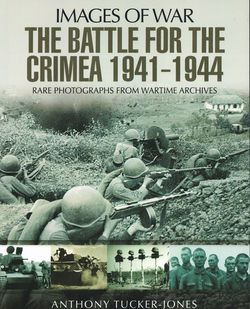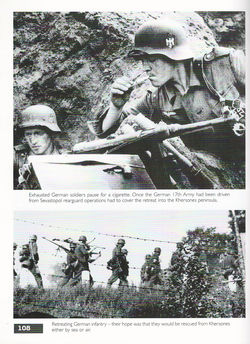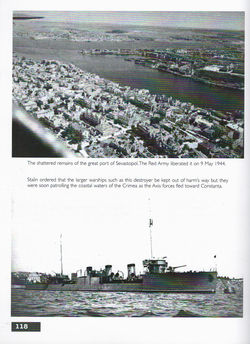THE
BATTLE FOR CRIMEA 1941-1944 WW2 EASTERN FRONT UKRAINE SEVASTOPOL KERCH PEREKOP
KHERSONES
IMAGES OF WAR SOFTBOUND BOOK in ENGLISH
by ANTHONY TUCKER-JONES
RARE PHOTOGRAPHS FROM WARTIME
ARCHIVES
The selection of over 150 rare
wartime photographs in this volume in Pen & Sword’s Images of War series
offers a graphic visual record of the dramatic and bloody battles fought for
the Crimea during the Second World War. They show every grim aspect of the
fighting and reflect in many ways the ruthless character of the struggle across
the entire Eastern Front.
The German-led Axis forces took
eight months to conquer the Crimea in 1941-2 – the Soviet defenders of the
fortified city-port of Sevastopol held out against repeated assaults for 250
days. In 1944, after the course of the war had turned against the Wehrmacht and
their allies, the city was liberated by the Red Army, but only after over
120,000 Axis troops had been evacuated across the Black Sea.
Naval operations involving the
Soviet Black Sea Fleet and the Romanian Royal Navy are covered in the book, as
is the battle in the air between the Luftwaffe and the Red Air Force. But
perhaps the most memorable photographs give an insight into the ordinary
soldiers’ experience of the fighting and show the enormous material damage the
conflict left behind.
----------------------------------------
Additional Information from
Internet Encyclopedia
The Crimea campaign was an
eight-month-long campaign by Axis forces to conquer the Crimean Peninsula, and
was the scene of some of the bloodiest battles on the Eastern Front during
World War II.[citation needed] The German, Romanian, and defending Soviet
troops suffered heavy casualties as the Axis forces tried to advance through
the Isthmus of Perekop linking the Crimean Peninsula to the mainland at
Perekop, from summer of 1941 through to the first half of 1942.
From 26 September 1941 the
German 11th Army and troops from the Romanian Third Army and Fourth Army were
involved in the fighting,[1] opposed by the Red Army's 51st Army and elements
of the Black Sea Fleet. After the campaign, the peninsula was occupied by Army
Group A with the 17th Army as its major subordinate formation.
Once the Axis (German and
Romanian troops) broke through, they occupied most of Crimea, with the
exception of the city of Sevastopol, which was given the title of Hero City for
its resistance, and Kerch, which was recaptured by the Soviets during an amphibious
operation near the end of 1941 and then taken once again by the Germans during
Operation Bustard Hunt on 8 May.[1][3] The Siege of Sevastopol lasted 250 days
from 30 October 1941 until 4 July 1942, when the Axis finally captured the
city.
In the early hours of 6
November, the Romanian submarine Delfinul, commanded by Constantin Costăchescu,
torpedoed and sank the Soviet 1,975-ton cargo ship Uralets four miles South of
Yalta. The submarine was subsequently attacked by Soviet forces but she
followed a route along the Turkish coast and managed to evade up to 80 depth
charges, before safely arriving in the port of Constanța on 7 November.
Sevastopol, the main object of
the campaign, was surrounded by German forces and assaulted on 30 October 1941.
German troops were repulsed by a Soviet counterattack. Later, many troops who
had been evacuated from Odessa contributed to the defence of Sevastopol. The
Germans then began an encirclement of the city. Other attacks on 11 November
and 30 November, in the eastern and southern sections of the city, failed.
German forces were then reinforced by several artillery regiments, one of which
included the railway gun Schwerer Gustav.[citation needed] Another attack on 17
December was repulsed at the last moment with the help of reinforcements and
Soviet troops landed on the Kerch peninsula the day after Christmas, to relieve
Sevastopol. The Soviet forces remained on the peninsula until a 9 April German
counterattack. They held on for another month before being eliminated on 18
May. With the distraction removed, German forces renewed their assault on
Sevastopol, penetrating the inner defensive lines on 29 June.[citation needed]
Soviet commanders had been flown out or evacuated by submarine towards the end
of the siege and the city surrendered on 4 July 1942, although some Soviet
troops held out in caves outside of the city until 9 July.
In
1944, Crimea was recaptured by troops of the 4th Ukrainian Front during the
Crimean Offensive (8 April 1944 – 12 May 1944).








